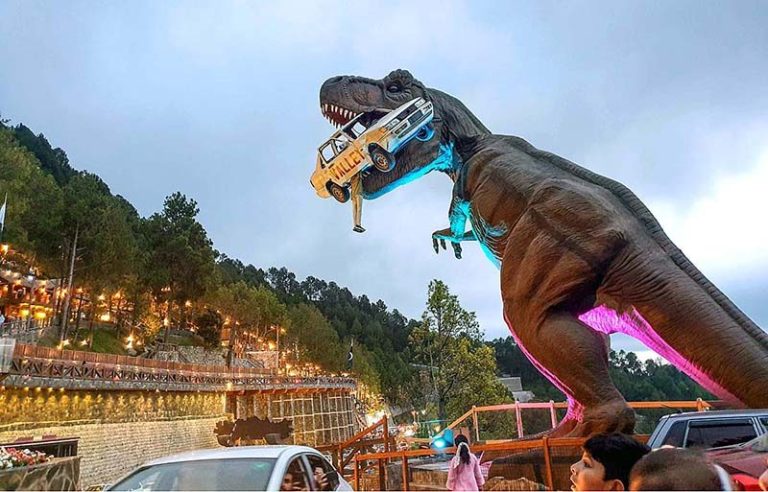Everest Base Camp Trek in Autumn
Situated deep within the Himalayas, Everest Base Camp Trek is a renowned destination for hikers from all over the world. Perched at 5,364 meters (17,598 feet) above sea level, it provides breathtaking vistas of high peaks, including Mount Everest. For those who dare to tackle its paths, this legendary walk offers a sense of triumph along with stunning vistas and cultural experiences. It’s a fantastic excursion that appeals to those who enjoy thrill and the outdoors. In addition, the autumn Everest Base Camp Trek is a fantastic opportunity to stroll around the Sherpa homeland and take stunning pictures.
What to Expect during the trek to Everest Base Camp?
The ideal time to see this amazing journey’s splendor is in the fall, if you’re considering taking it. There is a magnificent shift in the Everest region when summer fades and the rain clouds disappear. Tall peaks proudly stand against a clear blue sky, the trails turn colorful, and the weather gets lovely. We welcome you to discover the allure of hiking to Everest Base Camp during the fall season in this blog. With every step come breathtaking vistas, diverse cultural encounters, and an unparalleled sense of accomplishment. Come experience the crisp alpine air as we uncover the magic and magnificence of the Everest Base Camp hike during the fall season. But the Everest region is a great place to go trekking and provides some of the most well-known treks in the world, such as Gokyo.
The Majesty of Everest in Autumn
When you set off on the Everest Base Camp Trek in the charming fall, get ready to be enthralled by the breathtaking sights of the Everest region. With bright sky and breathtakingly expansive views, this time of year provides unmatched chances to take in the majesty of the surrounding peaks.
You’ll be treated to wide-open views that go on forever as you follow the trail. You can see very well in the clear autumn air, which lets you take in the breathtaking scenery that unfolds in front of you. You will be in complete wonder as the majestic peaks of Ama Dablam, Lhotse, Nuptse, and Everest rise majestically against the background of the deep blue sky.
This breathtaking view features the Himalayan jewel, Mount Everest, in the center. Everest is the world’s highest peak, so it deserves respect and consideration. The mountain’s true magnificence is shown in the fall, when the sun’s golden rays shimmer on its snow-capped summit. Everest’s utter size and splendor are bound to leave a lasting impression on your soul.
But Everest isn’t the only thing that is magnificent. Other famous peaks that are scattered across the Everest region enhance the beauty of the surroundings. Lhotse, the world’s fourth tallest peak, stands as an intimidating adversary to Everest. While Nuptse, with its remarkable pyramidal shape, stands lofty. Ama Dablam lends a touch of beauty to the landscape with its graceful and unusually formed top. Every peak has a distinct personality that adds to the area’s allure.
You’ll have lots of time on your trip to stop, think, and take in the breathtaking vistas of the mountains. The majesty of Everest and its surrounding peaks will captivate your senses and serve as a constant reminder of the utter force and beauty of nature, whether you are viewing it from the trails, the tea houses, or the several vantage spots along the way.
Weather and Conditions:
The Everest region experiences pleasant weather in the fall, which draws a large number of hikers to the region. With its picturesque vistas of pristine white peaks, autumn is the perfect season to hike in Nepal’s Himalayas. This is a summary of the weather you can anticipate on an October hike:
Average Temperature
In the Everest region, the fall season is defined by comfortable, moderate temperatures. At lower elevations, the temperature ranges from roughly 10 to 15 degrees Celsius (50 to 59 degrees Fahrenheit), making for generally warm and comfortable days. Higher elevations cause a gradual drop in temperature. The overnight low in places like Everest Base Camp and its environs can be as low as -10 degrees Celsius (14 degrees Fahrenheit).
Precipitation
In the Everest region, the fall season is defined by comfortable, moderate temperatures. At lower elevations, the temperature ranges from roughly 10 to 15 degrees Celsius (50 to 59 degrees Fahrenheit), making for generally warm and comfortable days. Higher elevations cause a gradual drop in temperature. The overnight low in places like Everest Base Camp and its environs can be as low as -10 degrees Celsius (14 degrees Fahrenheit).
Visibility Around the Khumbu
Autumn is the best season for trekking and mountaineering in the Everest region because of the good visibility it offers. Trekkers can take in expansive views of the majestic Himalayan peaks, such as Mount Everest, Lhotse, Nuptse, and Ama Dablam, because the skies are typically clear and crisp. Because there aren’t any monsoon clouds or haze, vision is improved and breathtaking views of the surrounding countryside are available.
Tranquil Trails: Trekking Experience in Autumn
Since autumn is seen as the off-peak trekking season in the Everest region, it’s a great time for people who want to spend more time in nature and in peace. In contrast to the busy trails in the spring, autumn offers a calm and serene ambiance that makes it possible for hikers to get closer to the amazing scenery.
Fall hiking offers several benefits, chief among which is the marked decrease in the number of other hikers on the trails. The crowds thin out as the busiest trekking season ends, allowing you to explore the trails at your own speed without feeling hurried or congested. Being alone makes it possible to appreciate the natural surroundings more fully, making the experience more intimate and unique.
There is less competition for lodging along the trail since there are fewer hikers. This implies that you won’t have to make reservations or hustle to get a place, and you’ll have a better chance of getting your desired accomodation, such as tea houses or guesthouses. A more laid-back and stress-free trekking experience is facilitated by the availability of lodging and the lack of crowding.
Diverse Flora and Fauna in Autumn
The Everest region’s hillsides change dramatically as fall approaches, bringing a vivid pallet of hues to the surrounding scenery. The deciduous trees, which include birch, maple, and rhododendron, gracefully display a stunning range of red, orange, and golden hues when they shed their green leaves. Walking through these vibrant forests is a sensory experience that transports you to the artistry of nature and offers a striking contrast to the beautiful snow-capped peaks.
Trekking in the autumn brings with it many chances to see interesting wildlife, such the graceful and nimble Himalayan Tahrs navigating stony landscapes and the secretive Musk Deer feeding at dawn and dark. Additionally, the area is home to vibrant pheasants like the Blood Pheasant and the Himalayan Monal, which spruce up the surrounding area.
For birdwatchers, autumn is a fantastic time to visit the Everest Base Camp, as migratory species pass through. The brilliant plumage of the spectacular Himalayan Monal and the graceful Snow Pigeon soaring through the skies add to the region’s natural symphony.
Autumn Trekking Tips
Autumn is a great time to trek to Everest Base Camp because of the beautiful scenery and ideal weather. It’s crucial to think about critical safety advice and procedures in order to guarantee a fun and safe trekking trip.
Hiking at high heights requires careful acclimatization. Give your body plenty of time to acclimate to the rising altitude. Make sure your plan includes enough downtime to allow for acclimatization, particularly when you get higher up. Avoid gaining more height than 300–500 meters (984–1640 feet) each day and ascend gradually. It’s crucial to pay attention to your body, and if you see any signs of altitude sickness, move down to a lower altitude right away.
An additional crucial factor to take into account before starting the hike is physical fitness. Make staying physically healthy a priority and get your body ready for the strenuous nature of hiking. To increase stamina, do frequent cardiovascular exercises like jogging, walking, or trekking. Strengthening your leg muscles with strength training workouts will assist you navigate the difficult terrain. It is best to speak with a healthcare provider before beginning any new fitness program.
How to well prepare for the Everest Base Camp Trek in Autumn?
Purchasing top-notch trekking equipment is crucial to guaranteeing your comfort and security. A strong and cozy pair of hiking boots, well fitting socks, layers of breathable, moisture-wicking gear, a windproof and waterproof jacket, and pants are a few of the necessities. Remember to bring along a headlamp, gloves, sunscreen, sunglasses, a warm cap, and a well-supported backpack. It’s essential to keep hydrated by carrying an adequate amount of water and employing a water filtration device.
Preventing altitude sickness should be the main focus of trekkers in the Everest region. Recognize the signs of altitude sickness, which include nausea, headaches, dizziness, and dyspnea. It’s crucial to stay away from alcohol and smoke and drink lots of water to prevent altitude sickness. If a doctor has prescribed medication, such as acetazolamide, you should think about taking it. It’s critical that you get medical help right once and descend to a lower altitude if you or any group members develop serious symptoms.
For your general health during the hike, drinking plenty of water and eating a healthy diet are crucial. Maintaining healthy nutrition and hydration is essential for maintaining your energy levels. To stay hydrated, it’s critical to consume a lot of liquids, such as water, herbal tea, and electrolyte solutions. It is advised to eat wholesome meals that contain a well-balanced combination of proteins, carbs, and healthy fats. Although there are several tea cafes along the walking path that serve food, it is still a good idea to bring snacks and energy bars.







